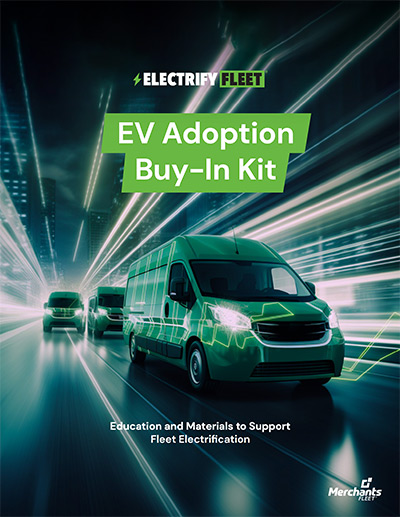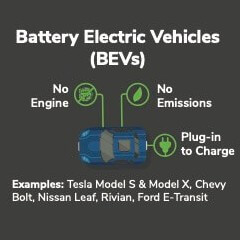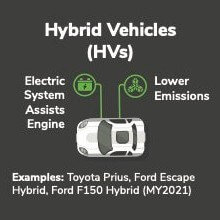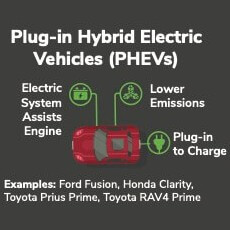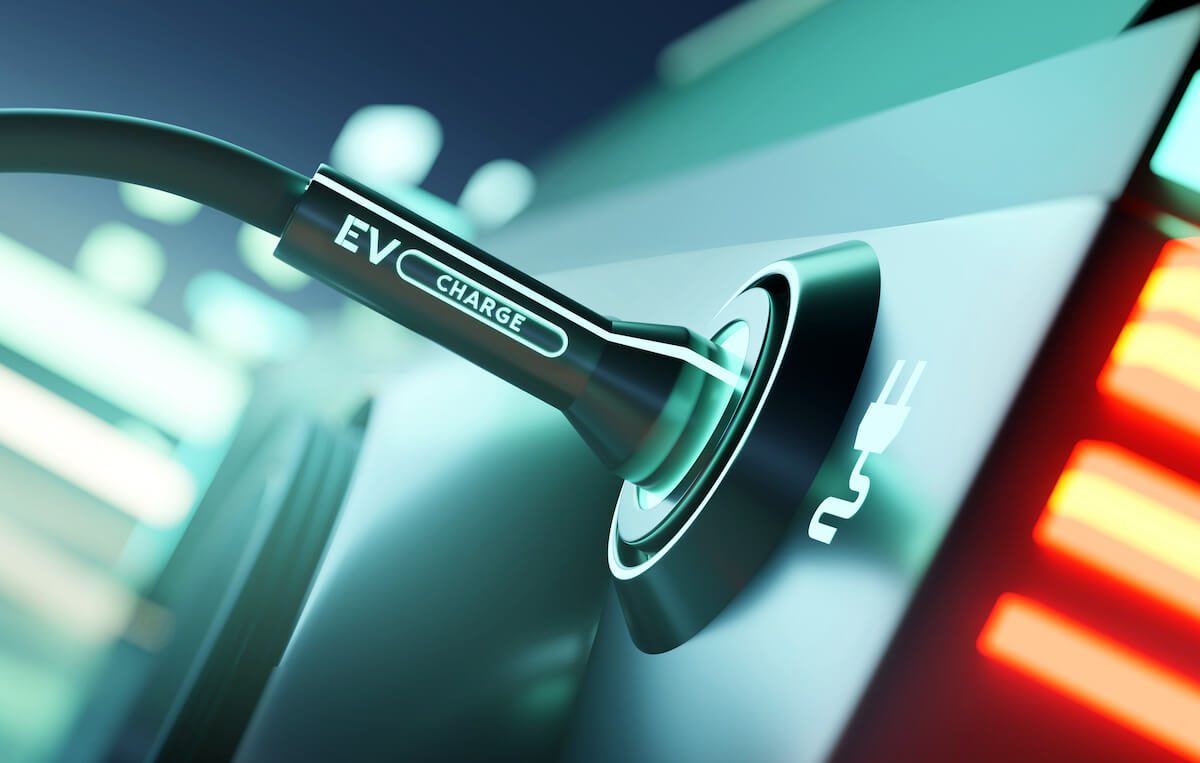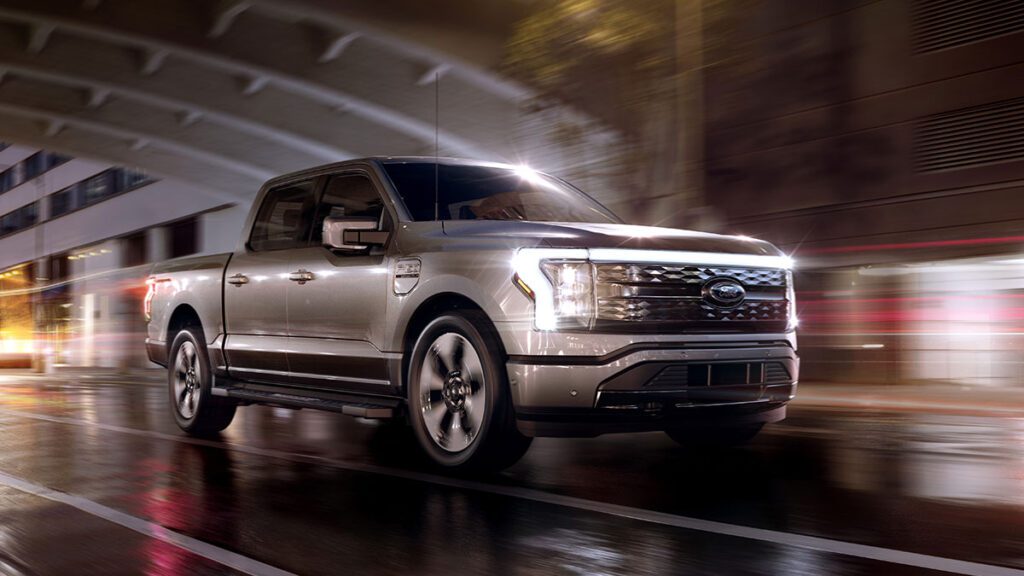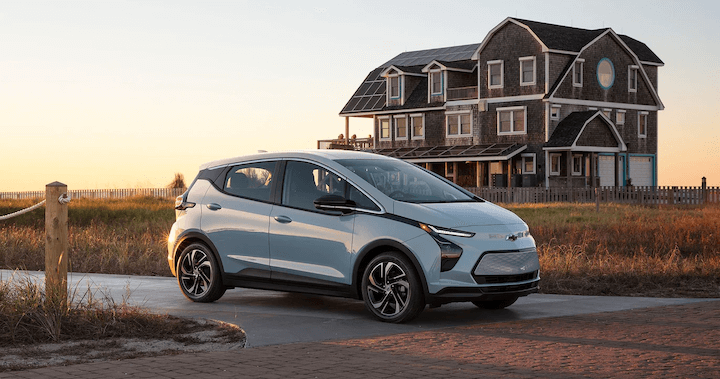Types of Electric Vehicles: BEVs, PHEVs, HEVs & FCEVs
Amid talk of legislation, trends, and owner incentives surrounding electric vehicles, you may hear a number of unfamiliar acronyms tossed around. Just how many different types of electric vehicles are there, and what do all those letters mean? Here, we break down all the types of EVs so you can make an informed buying or leasing decision for your commercial fleet.
What Is an Electric Vehicle?
An electric vehicle, or EV for short, is any kind of vehicle that utilizes one or more battery-powered electric motors to operate. Batteries can be charged via residential, commercial, or public charging stations. Through regenerative braking technology, EVs capture the kinetic energy from braking and converts it into the electrical energy that can also charge the vehicle’s high voltage battery.
In recent years, EVs have gained increasing popularity as passenger cars, public transportation, and commercial fleet vehicles. Nearly every automotive OEM has committed to building and supporting EVs, with more than 20 models coming to market in 2022 and 2023.
Types of Electric Vehicles
We lay out the most common EV types below, as well as their pros and cons.
Battery Electric Vehicles (BEVs)
This type of EV is what most people might think of when they hear “electric vehicle.” BEVs are solely battery powered, which is recharged by electricity. Examples of BEVs include Tesla Models S and X, the Chevrolet Bolt, the Ford F-150 Lightning, and the Ford E-Transit.
A BEV does not contain any internal combustion engine or related components. The motor draws all its operating energy from the battery pack. These vehicles must be charged from the electricity to drive, which can be accomplished by a Level 2 (L2) charger or Level 3 (L3) fast charging station.
Pros: Larger battery capacity than hybrid vehicles, zero direct emissions, quiet.
Cons: Higher cost due to battery technology, Range may be limited on certain models
Hybrid Electric Vehicles (HEVs)
Hybrid electric vehicles are exactly what they sound like: they operate on a combination of power from an internal combustion engine system and a hybrid battery. HEVs are most comparable to ICE vehicles since they use gasoline as a primary fuel source. The most well-known example of a HEV is the Toyota Prius, which has been leading the hybrid pack since its debut in 1997.
The ICE engine does most of the heavy lifting in a HEV, but the electric motor will take over when additional power is needed, such as when accelerating from a full stop. In fact, the lithium ion battery in a HEV gets its charge from the ICE itself, acting like a generator and through regenerative braking.
HEV technology takes overt when the engine at its most efficient state, such as when cruising on the highway. When stop and go conditions are encountered the hybrid battery assists the engine – thereby reducing overall fuel consumption. Since HEVs don’t rely solely on electric power, drivers do not need to charge or monitor their batteries. As such, most HEVs cannot be plugged into the power grid.
Pros: More fuel efficient than ICE vehicles, range is limited only by size of gas tank.
Cons: Requires gasoline and oil, generates tailpipe emissions. .
Plug-in Hybrid Electric Vehicles (PHEVs)
Like an HEV, a plug-in hybrid electric vehicle uses a combination of an ICE and a battery pack to operate, with the addition of a charging port. PHEVs are an excellent choice for eco-conscious drivers who still want the security of being able to fill up their tank in the absence of a charging station.
There are PHEVs available from a wide range of manufacturers, including Ford, Jeep, Toyota, Subaru, Chrysler, Audi, and BMW, just to name a few. Popular models include the Toyota RAV4 Prime, the Ford Escape, and the Jeep Wrangler.
Like BEVs, PHEVs can charge on a L2 charger or in some cases, via a regular wall outlet. It is not necessary to fully charge a PHEV in order to operate the vehicle. Like regular ICE vehicles, PHEVs can travel hundreds of miles on a full tank of gasoline.
In general, PHEVs have larger battery packs than HEVs, and some PHEV models can travel between 10–40 miles on electric alone before the ICE is activated. If the PHEV battery is depleted, the vehicle will operate like a traditional hybrid.
Based on driving conditions and operation, PHEVs will automatically switch between ICE and electric power and recharge the battery when not in use. If either the battery charge or the fuel tank is depleted, a PHEV can operate solely on its remaining fuel source (provided there is enough).
Pros: Fuel source flexibility, no range limit, charging station compatibility, can be quiet.
Cons: Large battery pack increases price, requires gas and oil, generates gas emissions.
Fuel Cell Electric Vehicles (FCEVs)
Fuel cell electric vehicles are similar to BEVs in that they rely on electrical energy to operate, but that energy is generated and stored in a very different manner. While BEV batteries primarily derive their energy from the battery that is part of the vehicle, FCEVs create their own electricity through a chemical reaction that combines hydrogen and oxygen.
In addition to a battery pack, FCEVs contain a tank that supplies hydrogen to the vehicle’s fuel cell, where it reacts with the surrounding air. The only “emission” generated by a FCEV is water, which exits the vehicle through the tailpipe at steam. Due to their unique charging capabilities, FCEVs do not need to be plugged into the power grid. They are instead refueled by filling the tanks with more hydrogen.
FCEV models are predominantly being tried for medium and heavy-duty vehicles, where the size of the battery can get quite large. These vehicles are still in development. The Toyota Mirai and the Hyundai Nexo are passenger FCEVs that are available in limited markets in the USA.
Pros: Comparable range, quiet, zero harmful emissions, fuels quickly.
Cons: Limited to hydrogen fueling stations, no ICE fallback option, high fuel costs, high price tag.
Benefits of EVs for Commercial Fleets
Today, EVs have hit a market adoption tipping point and have become a part of a growing industry-wide commitment to sustainability. Fleet owners who have not already made the switch to a partial or full EV fleet are increasingly encouraged (and incentivized) to electrify their fleets.
Here are just some of the benefits fleet managers experience after partial or full EV adoption:
Long term cost savings
While EVs are still more expensive, on average, for fleets to purchase upfront, they are quickly approaching price parity to ICE vehicles The benefit for fleet managers comes from a lower total cost of ownership (TOC). EVs require less maintenance than ICE vehicles, since there are fewer moving parts. This can prevent unplanned downtime and save companies potentially hundreds of thousands of dollars in annual repairs.
EVs come with major financial incentives too. As of January 2023, EVs can net eligible owners a tax credit anywhere from $7,500–$40,000.
Environmentally friendly to support ESG goals
EVs operate much more efficiently than ICE vehicles and do not produce harmful tailpipe emissions during operation, which is especially important for busy fleets. In addition to reducing emissions and pollution, EV adoption is one of the fastest ways for a company to hit their environmental, social, and governance (ESG) objectives.
Wide variety of vehicle options
With every major auto manufacturer now offering EV options, fleet owners have a multitude of choices to accommodate their business needs. For example, Ford Maverick Hybrid trucks have become popular fleet vehicles for their exceptional fuel economy and large truck bed. Likewise, Teslas are a great choice for customer-facing executive and sales fleets, while the Ford F-150 Lightning and upcoming Chevy Silverado Electric work trucks are ideal for contractors and utility services.
To determine which type of EV is best for your fleet needs, run your fleet telematics software to identify the best opportunities for replacing ICE vehicles with EVs. Then, implement a pilot program to test on-the-job performance.
Partnering with an experienced fleet management company can help take the guesswork out of EV adoption. With a dedicated team of EV experts, Merchants Fleet can provide consultations and run audits to assess your current fleet performance, then make recommendations for the best approach to EV adoption. Merchants can also help you implement a pilot program to test any of our EVs available for lease.
In addition to a growing inventory of BEVs and PHEVs, we offer a variety of fleet support programs, including charging infrastructure, telematics, maintenance, fuel cards, and more. Contact an electric vehicle fleet expert today to learn what EV adoption might look like for your business.
